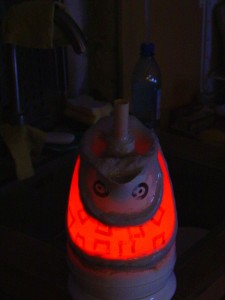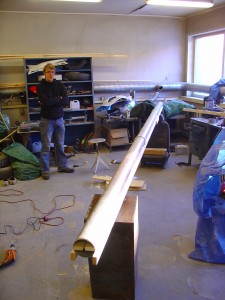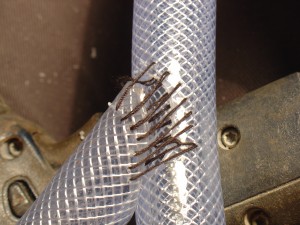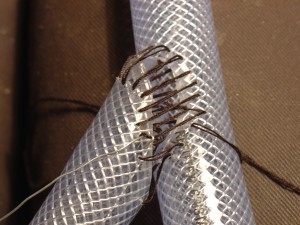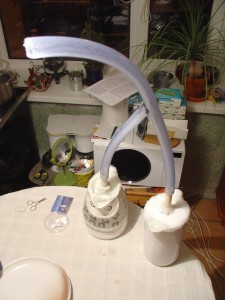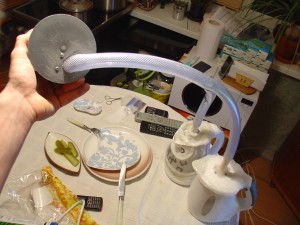We are inevitably pushing closer to the completion of the steaming setup. Better said – it has already been completed. In the process of stitching up a Y joint for our silicone-wire-braided steam guiding tube, I was inspired by the last person in England that professionally stitches rugby balls by hand. There is such a person, she was on the infamous YouTube showing her skills. I was sitting and pondering on how to go about joining the Y, when I remembered the rugby lady. Started out with two pieces of hose, a long nice stainless steel needle and some strong threading, and I ended up with a short, burned piece of dull needle and a very tight Y joint to be siliconed. I give credit to cardiovascular surgeons who have to stitch up blood vessels in a living person, with microscopic tweezers under a magnifying glass. I had the advantage of using a blow torch and some hard stainless tweezers. So.. if you feel you need some surgery, give me a call, I’ll heat up the torch. I have the experience.
- The halloween kettle.
- Joosep staning next to our steaming test setup. We will use our garages powerful ventilation to condensate the steam, keeping it away from the inside room. I bet the moisture content in the room would rise after a day of steaming. Like a sauna. Notice the strongback under the piping. The tube will deform under heat. The strongback will keep it firm. We will wrap old rags around the whole thing to keep it warm and condensation as low as possible, to get the hottest steam.
- Higher levels of stitching. The method is to do all the stitches loose, then tighten them up. I ended up stitching with a 1 cm needle, cut from a perfectly fine sewing needle.
- Simple wire hook used to pull the stitches in. The Y joint really was tight. I blew trough the hose, barely a hiss from the stitches. I used a 1 mm drill bit to predrill the holes. It is possible to push trough the needle, but why the extra pain?
- The Siamese water kettles. The good and the bad twin.
- The paried kettles connected to one of the end caps of the PVC piping. We decided to join the tube to the cap under an angle, yielding a rotation of steam in the tube. That should give better results, we hope.
This week we plan on running the first tests to see whether this ingenuity actually works or not.. We also have a Facebook page now. Subscribe there, if you wish, or like, if you wish. We like.

